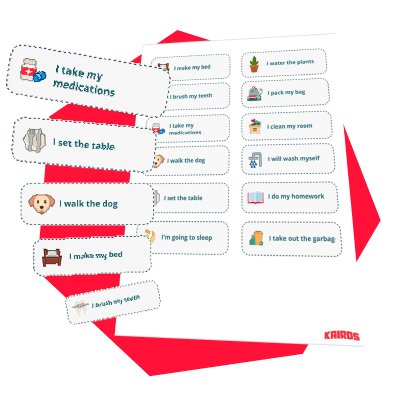Creating a homework routine for children with ADHD
Homework can be a significant source of stress for children with ADHD and their parents. Establishing a consistent and effective homework routine can help alleviate this stress, improve academic performance, and foster a positive attitude toward learning. This blog provides strategies to create a homework routine tailored to the needs of children with ADHD.
Understanding the challenges of homework for children with ADHD
Children with ADHD often face unique challenges when it comes to homework, including:
- Difficulty Focusing: Sustaining attention on homework tasks can be challenging.
- Procrastination: Delaying homework until the last minute can lead to incomplete or rushed work.
- Organizational Issues: Keeping track of assignments and necessary materials can be difficult.
- Frustration and Anxiety: Struggling with homework can lead to feelings of frustration and anxiety.
Setting up a dedicated homework space
Creating a dedicated homework space can help minimize distractions and improve focus. Here’s how to set up an effective workspace:
Choose a Quiet Location: Select a quiet, well-lit area in your home where your child can work without interruptions. Avoid high-traffic areas and spaces with potential distractions, such as the living room or kitchen.
Organize Supplies: Ensure all necessary supplies, such as pencils, paper, and textbooks, are readily available. Use organizers and storage solutions to keep the space tidy and reduce the time spent searching for materials.
Comfortable Seating: Provide a comfortable chair and desk that are appropriately sized for your child. Ergonomic furniture can help maintain good posture and reduce physical discomfort.
Establishing a consistent homework routine
Consistency is key to creating a successful homework routine. Follow these steps to establish a predictable and effective routine :
Set a Regular Homework Time: Choose a specific time each day for homework. Consistent timing helps your child anticipate and prepare for homework, reducing resistance and procrastination.
Break Tasks into Manageable Chunks: Divide homework into smaller, manageable tasks. Use a timer to create work periods followed by short breaks. For example, implement the Pomodoro Technique with 25-minute work intervals and 5-minute breaks.
Create a Homework Checklist: Use a checklist to outline daily homework tasks. Checking off completed tasks provides a sense of accomplishment and helps your child stay organized. You can create a gamified homework routine using Kairos !
Implementing positive reinforcement
Positive reinforcement can motivate your child to complete their homework and develop good study habits. Here are some reinforcement strategies:
Use a Reward System like Kairos to motivate your child !
Immediate Praise: Provide immediate praise and positive feedback for effort and completion. Highlight specific behaviors, such as staying focused or finishing tasks on time.
Celebrate Achievements: Celebrate larger accomplishments, such as completing a challenging project or improving grades. Acknowledge your child’s hard work and progress with a special treat or family activity.
Encouraging self-advocacy and independence
Teaching your child self-advocacy and independence can empower them to take ownership of their homework and develop essential life skills.
Encourage Self-Advocacy: Teach your child to communicate with teachers about their needs and challenges. Role-play conversations and help them prepare questions or requests for assistance.
Promote Time Management: Use tools like planners, calendars, or apps like Kairos to help your child manage their time and track assignments. Encourage them to set reminders for due dates and break down long-term projects into smaller steps. See how apps like Kairos can support your child.
Foster Problem-Solving Skills: Encourage your child to identify and address obstacles independently. Ask guiding questions to help them think through solutions, such as, “What could you do if you’re feeling stuck on this problem?”
Collaborating with teachers and school staff
Collaboration with teachers and school staff is essential to support your child’s homework routine. Here’s how to foster effective communication:
Regular Check-Ins: Schedule regular check-ins with your child’s teachers to discuss their progress and any challenges. Share insights about what strategies are working at home and seek advice for school-related issues
Use a Communication Notebook: Implement a communication notebook or digital platform where teachers and parents can exchange notes about homework and classroom behavior. This tool helps ensure consistent support and monitoring.
Request Accommodations: If needed, request accommodations through an Individualized Education Program (IEP) or 504 Plan. Accommodations might include extended time for assignments, reduced homework load, or preferential seating.
Conclusion
Creating a structured and supportive homework routine is crucial for children with ADHD. By understanding their unique challenges, setting up a dedicated workspace, establishing a consistent routine, implementing positive reinforcement, encouraging independence, and collaborating with teachers, parents can help their children succeed academically. With patience, consistency, and support, homework can become a more manageable and positive experience for your child.
